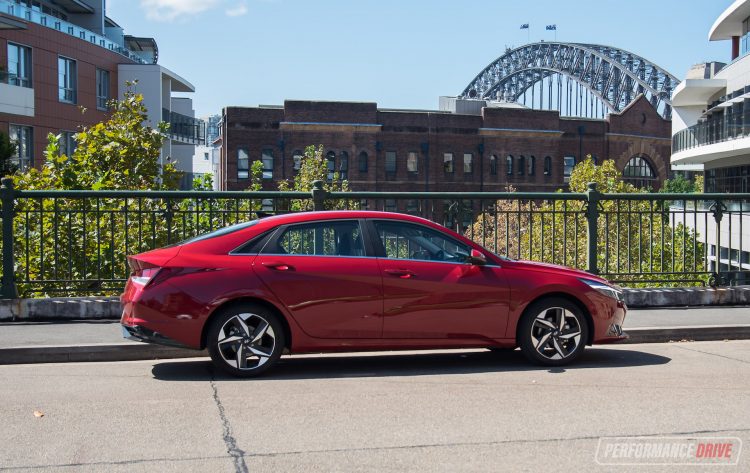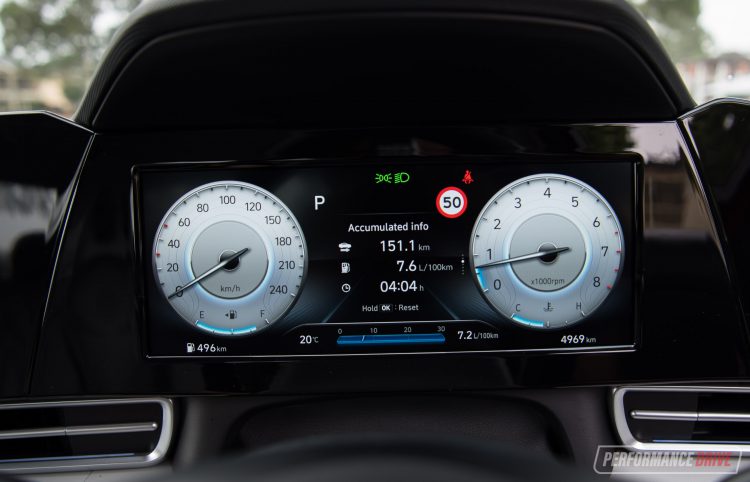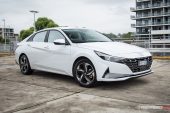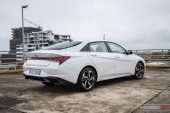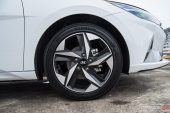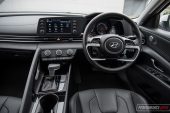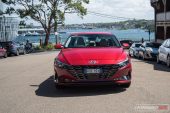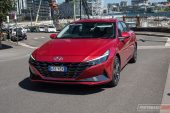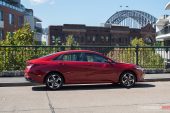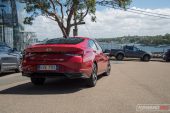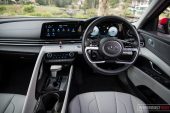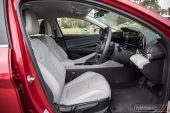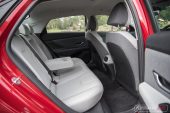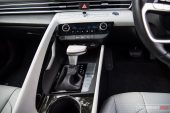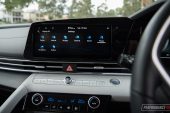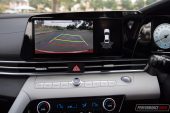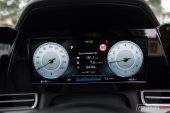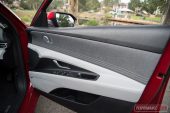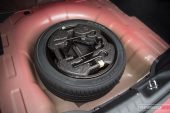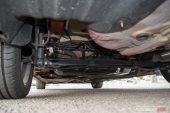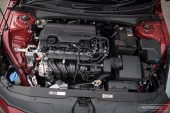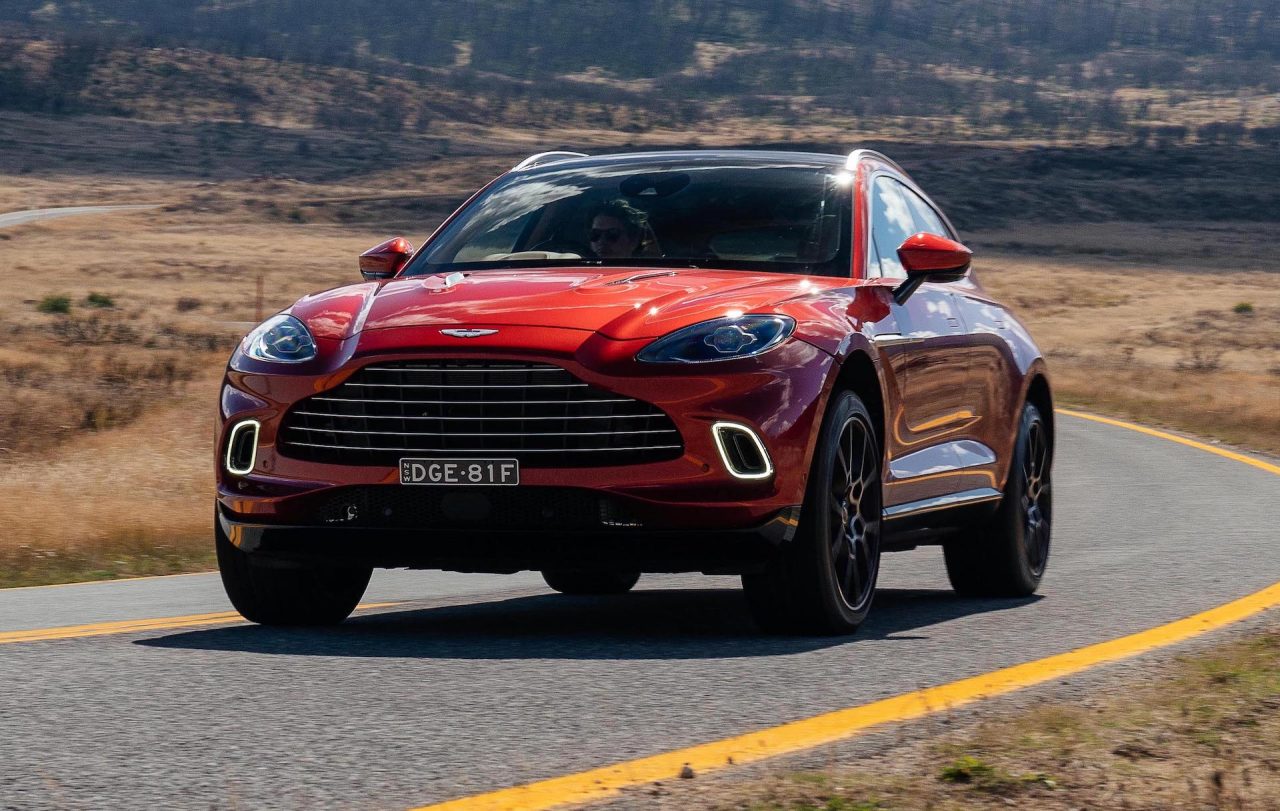In a world of SUVs and hybrid this and turbocharged that, the 2021 Hyundai i30 Sedan reminds us there is still plenty of life left in the humble, naturally aspirated four-door sedan formula.

The new i30 Sedan (Elantra, overseas) is based on a stretched and evolved version of the current i30 hatchback’s platform. You can get in three grade levels, spanning Active, Elite, and N Line. Power comes from a dependable 2.0-litre petrol engine that generates 117kW and 191Nm. If you want more oomph you’ll need the i30 N Line with its 150kW/265Nm 1.6 turbo.
For this review we’re looking at the two entry models, although mainly focusing on the Elite (included in the video). Prices start from just $26,790 for the Active and from $30,790 for the Elite. As you’ll discover as we go through, this is incredible value for money for the amount of kit you get, and for the fun driving experience and quality design that’s presented.
2021 Hyundai i30 Sedan Elite – THE SPECS
[column width=”47%” padding=”6%”]Engine: 2.0-litre four-cylinder
Output: 117kW@6200rpm / 191Nm@4500rpm
Transmission: Six-speed auto
Drive type: Front-wheel drive
Wheels: F & R: 17×7.0, 225/45
ANCAP: Not tested (hatch 5 stars)
Tare weight: 1272kg
Power-to-weight: 10.87:1 (kg:kW)
Official fuel economy: 7.0L/100km
Economy during test: 7.6L/100km
Fuel capacity/Type: 47L/91 RON[/column] [column width=”47%” padding=”0″]Power efficiency: 16.71kW:L/100km
0-60km/h: 4.71 seconds*
0-100km/h: 10.18 seconds*
60-110km/h: 7.02 seconds*
1/4 mile: 17.27 seconds at 137.2km/h*
Max acceleration: 0.810g
100-0km/h braking: 2.88 seconds at 37.72 metres*
Max deceleration: -1.412g
Decibel at idle: 42*
Peak decibel at 60-100km/h: 82*
Priced from: $30,790[/column][end_columns]
* Figures as tested by PerformanceDrive on the day. Factory claims may be different
2021 Hyundai i30 Sedan – THE PACKAGE
Based on Hyundai Motor Group’s latest K3 platform, which is a newer version of the i30 hatch’s K2 layout, the wheelbase on the sedan is 70mm longer than the hatch. It’s also 30mm wider. Both of these dimensions help to expand cabin space, particularly for the rear seat area. There is heaps of rear legroom here, and the front offers plenty of room to move about and a wide array of storage options.
We love the way the centre console wraps around the driver, but not in a confined or claustrophobic way. The application of at least three main materials and surfaces help to provide a quality three-dimensional depth, with modern textured grey fabric used for the door trims and dash. If you look closely you’ll also notice the front passenger side doesn’t get the white/bone leatherette treatment on the Elite, which makes the driver’s section feel secluded and intimate.
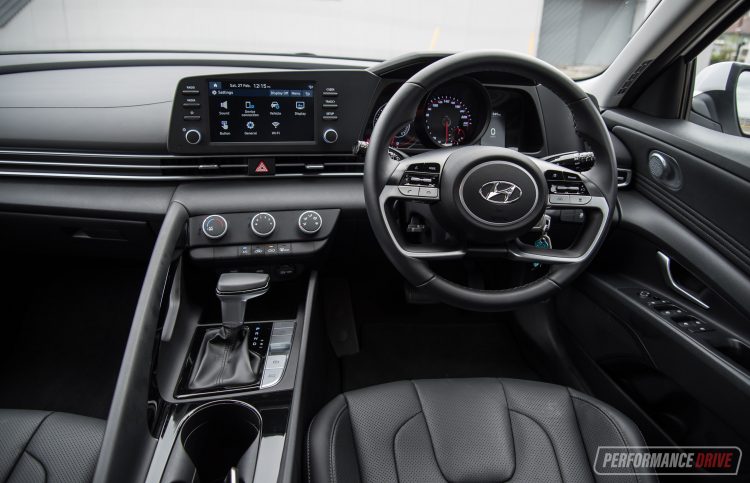
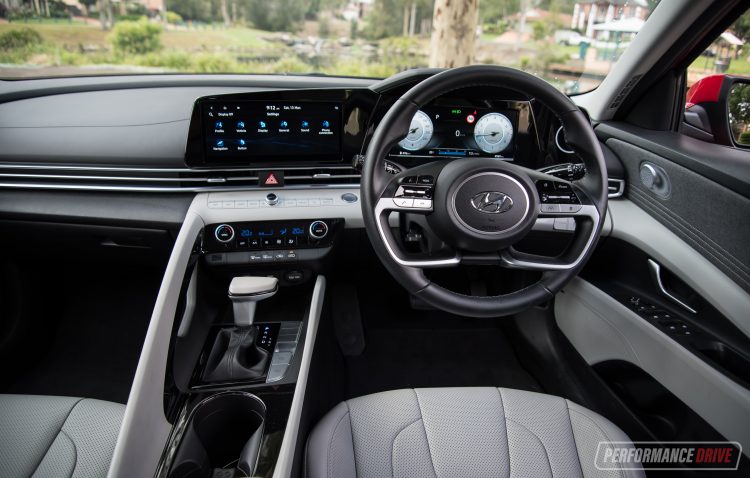
Up on the dash is Hyundai’s latest 10.25-inch touch-screen media interface. That’s on the Elite. In the Active you get an 8.0-inch unit. The Elite also comes with another 10-inch screen for the instrument cluster, just like the N Line, while the Active makes do with twin dials and a 4.2-inch digital display.
If you can stretch to the Elite, we’d highly recommend it. The cabin feels not only more premium, but it actually gets close to looking and feeling like proper premium model from Europe. The interior overall presents such a stunning atmosphere and there’s heaps of room for four adults, or two adults and three kids.
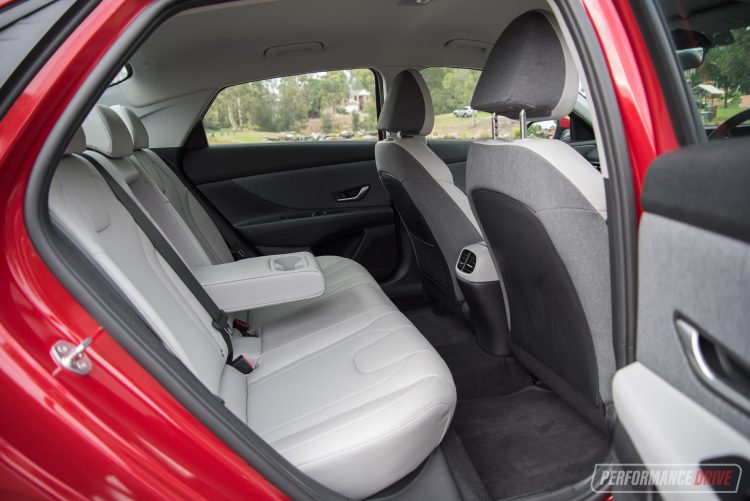
All models come with a wireless phone charger, along with Android Auto and Apple CarPlay, a rear-view camera with parking guidelines, real-time tyre pressure monitoring, adaptive cruise control (auto models), three drive modes (auto models), and a full suite of safety assist systems. ANCAP hasn’t tested the sedan but the i30 hatch has been rated 5 stars. Stepping up to the Elite adds dual-zone climate control, the bigger screens, an eight-speaker Bose sound system with digital radio, and keyless entry and push-button start.
Right at the back, under the deeply-kinked boot lid and sleek full-width taillight, you have 474L to utilise. That’s impressive for a small car, and a lot more than the 395L offered in the i30 hatch. However, in the hatch you can obviously fold down the rear seats to open up a wagon-like 1301L. A full-size alloy spare wheel sits under the floor on the Active and Elite, while the N Line features a space-saver.
2021 Hyundai i30 Sedan – THE DRIVE
Power comes from a conventional 2.0-litre petrol four-cylinder that develops 117kW and 191Nm, as mentioned. There’s nothing really fancy about it, but it fulfils its intended purpose perfectly. Thank heavens Hyundai has not equipped this engine with a CVT auto, like it recently did with the new Kona. A six-speed auto might seem basic but this is a basic kind of car, and we think it suits it perfectly.
Being a bit basic means this isn’t complicated or laden with complex drive systems. In fact, the tare weight is just 1272kg. That’s so light by today’s standards. According to the specs the Active weighs the same as the Elite, but we think the Active probably is a fraction lighter purely because it misses out on some of the ‘thicker’ features as mentioned above.
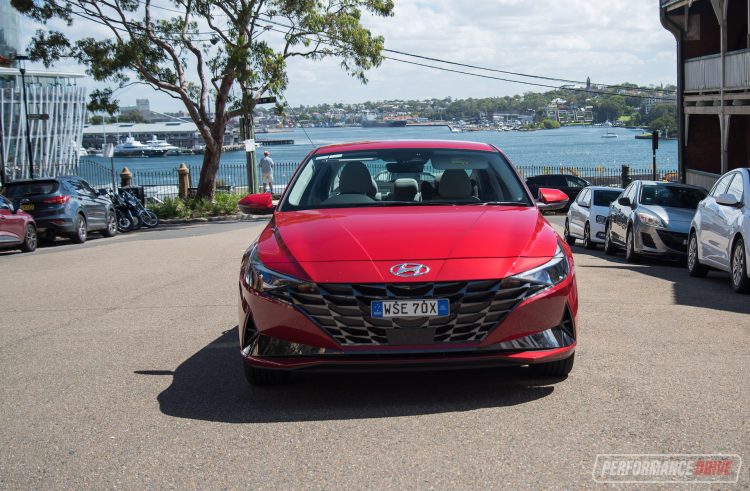
Some how this is even lighter than the equivalent i30 Elite hatch (1352kg, tare). And out on the road you can really feel it. You probably won’t believe us but this thing really handles. It steers in so nicely, and it maintains utter composure, even when pushed far beyond what anyone would expect from this class of car.
Hyundai has sort another exceptional balance between ride comfort and body control with the suspension tune, too. The wheels have plenty of room to move to absorb bigger bumps, and the firm chassis and longish wheelbase ensure high levels of stability. Pair this with an accurate and communicative steering system, and you’re left with a very well-accomplished and enjoyable package. Especially for this vehicle segment.
Another benefit of low weight is its impact on fuel economy. While many manufacturers (including Hyundai) are planning electrified options, this offers an official average consumption of 7.0L/100km. During our test over a distance of about 500km collectively (between Active and Elite), the reset trip computers revealed an average of about 7.6L/100km. These figures are very respectable given its fairly ‘basic’ formula.
2021 Hyundai i30 Sedan – THE VIDEO
2021 Hyundai i30 Sedan – THE VERDICT
If you want a good quality ‘car’ in the traditional sense (a sedan), Hyundai has taken a humble template here and created a modern, well-packaged and beautifully-designed option for you. It drives superbly and returns good economy and decent performance. And, above all, you get all of this at a very attractive price.
[column width=”47%” padding=”6%”]PROS:
– Accomplished handling and chassis
– Only weighs 1272kg
– Excellent value for money
– Striking exterior design, distinctive and premium interior (especially Elite)
– Practical and ergonomic cabin
[/column] [column width=”47%” padding=”0″]CONS:
– For this type of vehicle, there really is nothing we’d change; maybe further separation between Active and Elite? They look the same[/column][end_columns]
As always, if you’re thinking about buying a new car don’t forget to click here to speak with our car buying specialists.
